Conifers, formally known as Pinophyta or Coniferophyta, are mostly evergreen shrubs or trees that have needles or scale-like leaves and seed-bearing cones. Common varieties of conifers are cypresses, cedars, firs, larches, pines, junipers, redwoods, and yews.
Mostly found in cooler regions, conifers are preferred by gardeners because they are low maintenance, drought-resistant, and usually problem-free. They are also of great economic value because their wood is used for making paper and timber.
Conifers provide colour all-year-round and have an interesting texture. Coming in all sizes and shapes, they are perfect for hedges, groundcovers, and garden centrepieces, making them fabulous additions to your landscape. Conifers can even be grown as a bonsai!
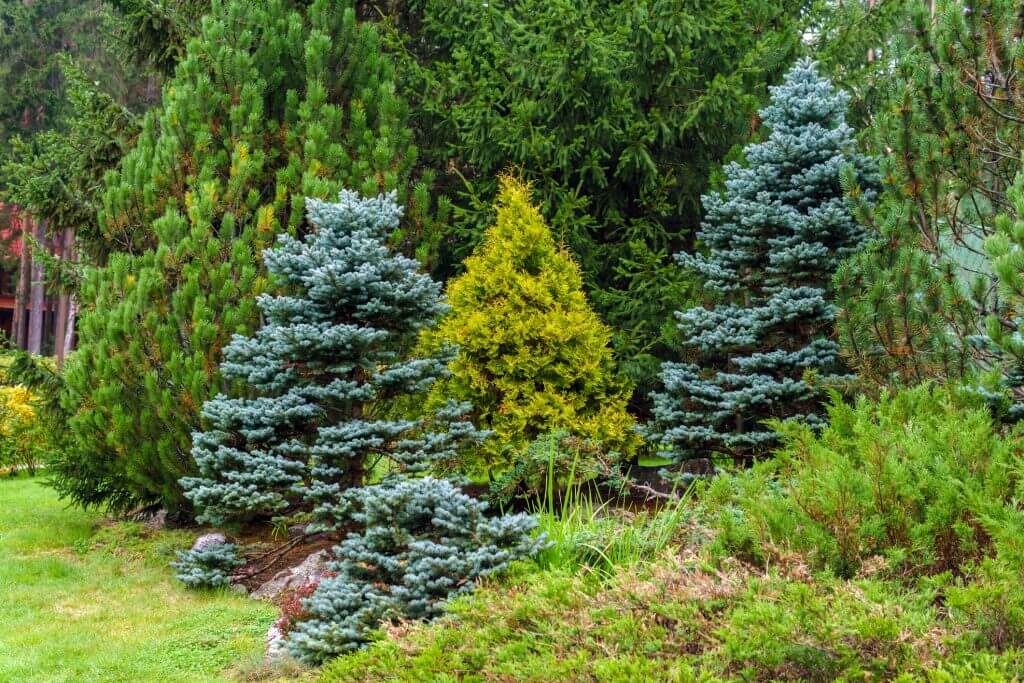

Common and Recommended Varieties of Conifers
Abies Concolor Candicans or White Fir
A stunning large evergreen conifer, White Fir is the bluest of all confiders. It forms a compact pyramid when young, maturing into a cylindrical and highly symmetrical shape that has layered branches enveloped by long, silvery-blue needles. Gorgeous pale green cones with purplish tone adorn the branches.
White Fir is a slow-growing conifer that only has 30cm growth every year and can reach a height of 9m and a width of 4.5m. Planted in rows, it can be an effective privacy screen. It is best at cold temperatures but can tolerate heat and drought.
- Location: Full sun or partial shade
- Soil: Well-drained and slightly acidic soil, but can adapt to poor soil.
- Watering: Water regularly during the first year of planting and occasionally during hot weather. Water thoroughly before winter.
- Pruning: Prune only to maintain its shape before new growth in spring.
- Feeding: Apply 5-10cm of mulch to conserve soil moisture, control weeds, and regulate temperatures. Use a high-nitrogen fertiliser or one that is formulated for evergreens in early spring or late autumn.
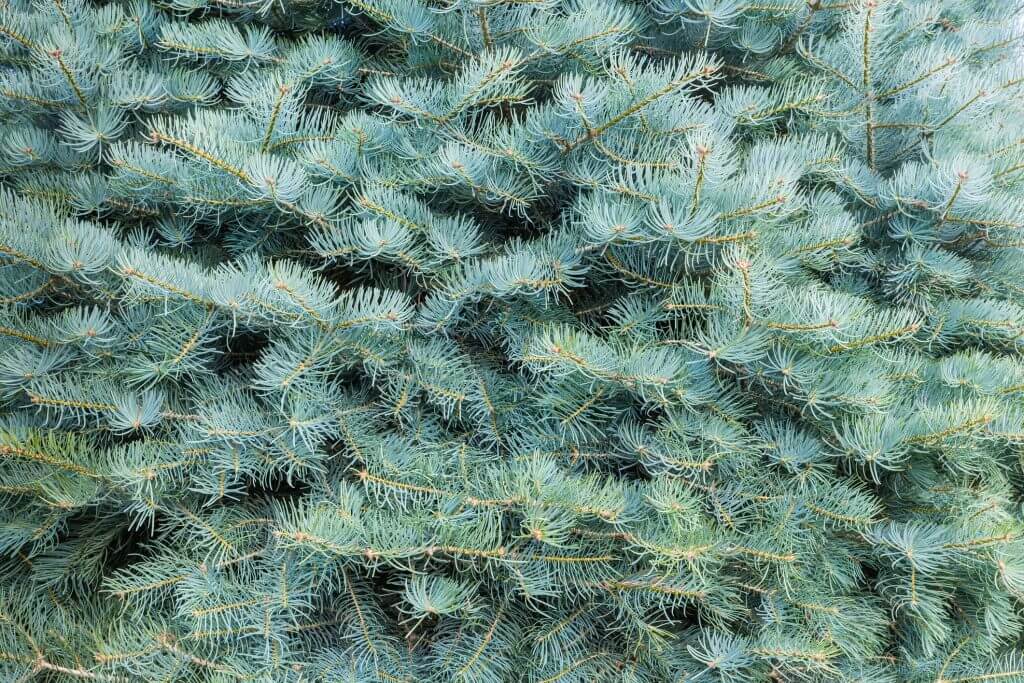

Abies Fraseri or Fraser Fir
A medium-sized conifer, a fraser fir has a narrow but compact pyramid form with a spire-like crown. It has resinous stems that are covered with short, flat dark green needles with turpentine scent. It has a grayish-brown bark that is smooth and thin with blisters on young trees, becoming scaly with age. Its seed cones, about 7cm long, are dark purple in colour when young and turn light brown as they mature.
The fragrance of a fraser fir will remind us of the winter season. It is commercially grown for use as Christmas trees because of its fresh scent and symmetrical shape. It is perfect as a Christmas tree because it lasts a long time before the needles fall off.
Unlike white fir, fraser fir cannot tolerate heat and humidity. It is also a slow-growing conifer with a growth of only 15-30cm a year. It can grow up to 9-15m high and 3-8m wide .
- Location: Full sun or partial shade
- Soil: Well-drained, slightly acidic soil.
- Watering: Keep the soil around the tree moist.
- Pruning: No pruning needed unless to maintain its shape.
- Feeding: Apply 5cm of mulch in spring or early summer to keep the soil moist and weed-free.
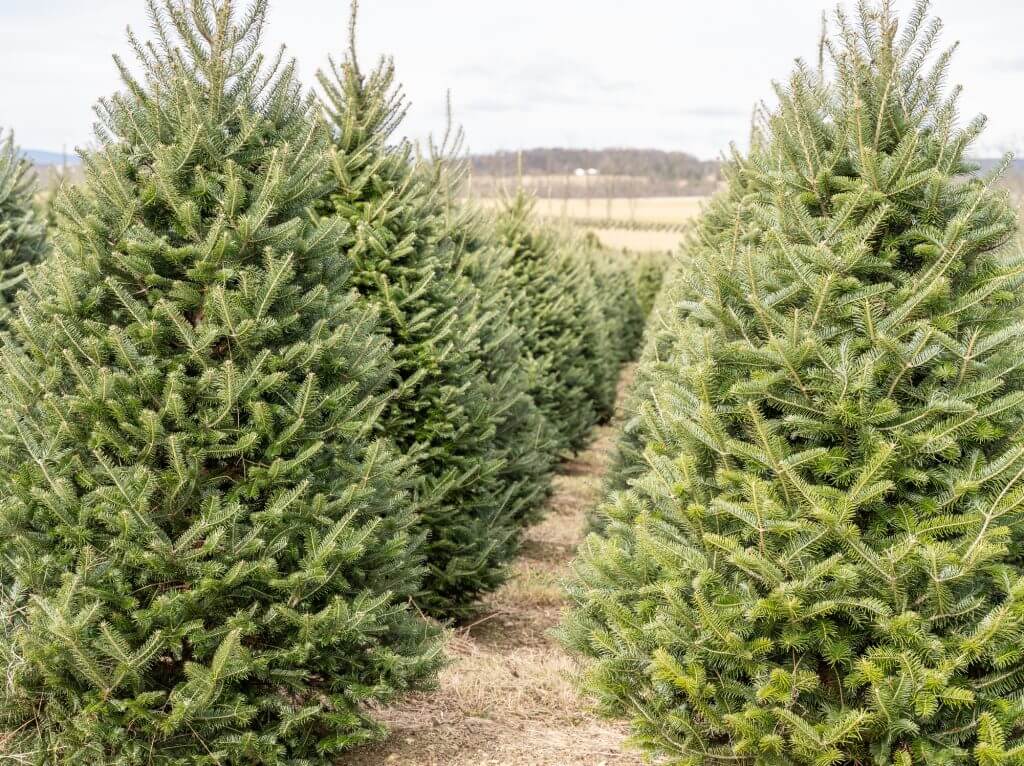

Abies Koreana Alpin Star or Korean Fir Alpin Star
Korean fir alpin star is a dwarf and evergreen conifer with irregular form covered with stunning dark green to steel blue needles, embellished with white undersides. Growing at 2-7cm per year, this conifer is a superb choice for small gardens and containers. This grows to a height and width of 30-60cm.
This conifer’s stunning cones are cylindrical and blue-violet in colour, turning into a dark brown colour and growing to about 8cm in length. After maturity, the cones open up and show a large amount of winged seeds.
- Location: Full sun or partial shade
- Soil: Well-drained, slightly acidic or neutral soil
- Watering: Water just enough to keep the soil moist.
- Pruning: Prune to keep its shape.
- Feeding: Fertilise in early spring and the middle of autumn with a good grade granular fertiliser.
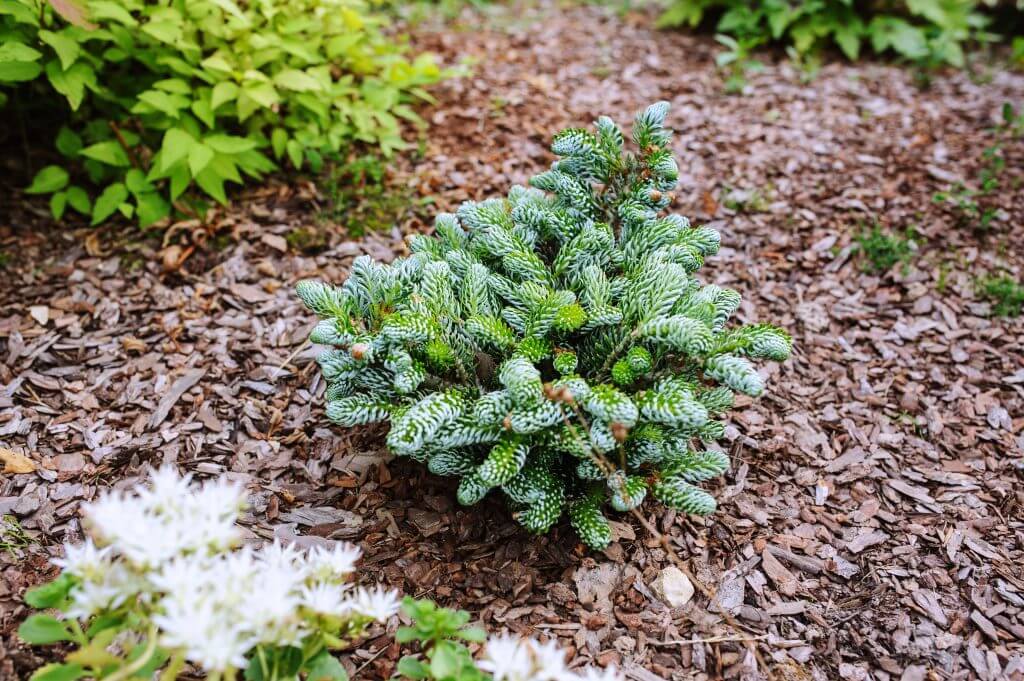

Abies Nordmanniana or Golden Spreader
The conifer Golden Spreader is another slow-growing evergreen that grows up to 90cm and 150cm wide. This is rather graceful and stately, winning the highly prestigious Award of Garden Merit from Royal Horticultural Society.
The conifers boast of soft green colour in summer and autumn, but its needles turn golden yellow in winter as if it’s glowing. This characteristic of Golden Spreaders makes it popular for a lot of gardeners and those who are looking to upgrade their gardens.
- Location: Full sun or partial shade
- Soil: Well-drained, slightly acidic soil.
- Watering: Water just enough to keep the soil moist.
- Pruning: Prune to maintain its shape.
- Feeding: Fertilise with a slow-release fertiliser yearly.
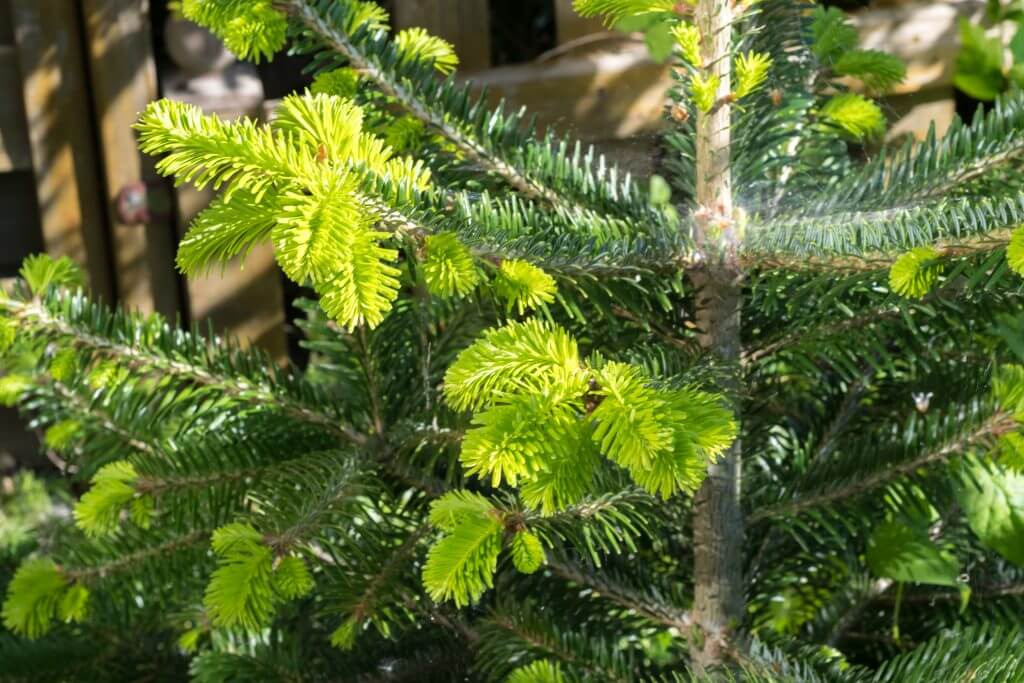

Abies Balsamea Nana or Balsam Fir
Balsam fir is an aromatic dwarf, evergreen conifer that is hugely popular for its spherical form. It has dense, short branches that are adorned by dark green needles, surrounding the stems. The new growth is coloured bright green, which brings contrast to mature needles. It produces small dark violet cones that ripen to dark brown.
Balsam fir is a slow-growing conifer with a yearly growth of 5-7cm and growing to 30-60cm tall and wide. Its slow growth makes it a superb choice for small gardens. It thrives in cooler regions and cannot tolerate heat and humidity.
- Location: Full sun or partial shade
- Soil: Well-drained, slightly acidic, and evenly moist soil.
- Watering: Water regularly just enough to keep the soil moist.
- Pruning: Prune to maintain shape.
- Feeding: During the first year, use a fertiliser with phosphorous. Apply mulch in winter.
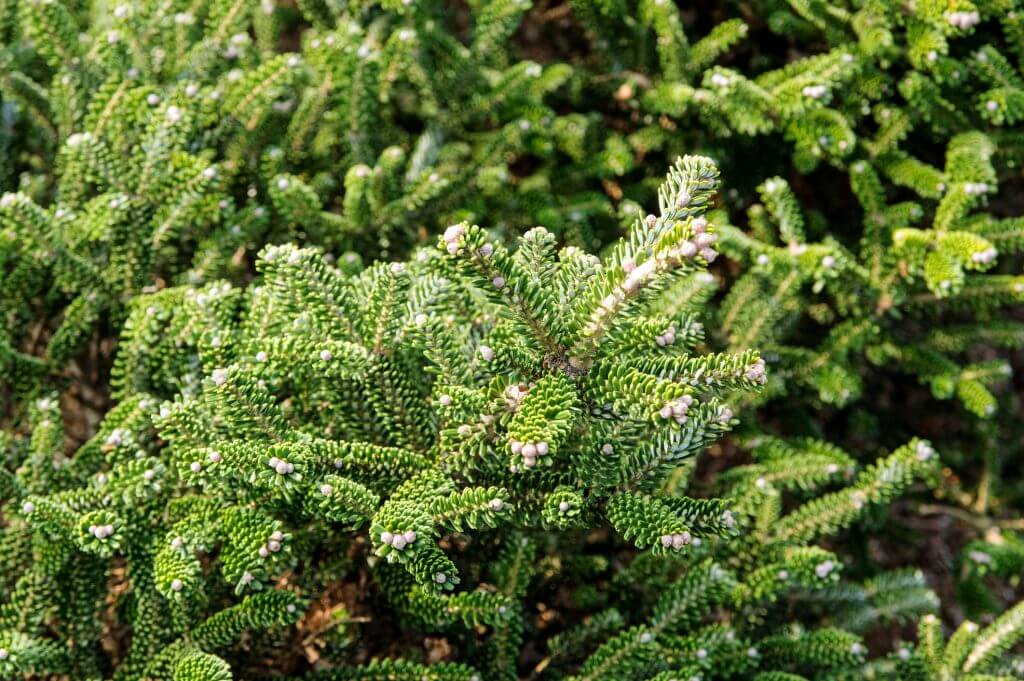

Abies Pinsapo or Spanish Fir
Spanish fir is a tall, evergreen conifer that has a narrow form when young, gradually becoming pyramidal and broad as it matures. It has short, pointed bluish-green needles with wax on both sides. The 18cm seed cones start as greenish pink or purple then turn light brown. The conifer matures to a height of 20-30m and width of 150cm in diameter.
The conifer’s gray bark is smooth and becomes scaly and rough as it ages. The branchlets are very stiff with a ridged texture and are reddish brown or greenish brown in colour before turning grey.
- Location: Full sun or partial shade
- Soil: Well-drained, moist soil.
- Watering: Average water to keep the soil moist.
- Pruning: No pruning required.
- Feeding: During the first year, use a fertiliser with phosphorous.
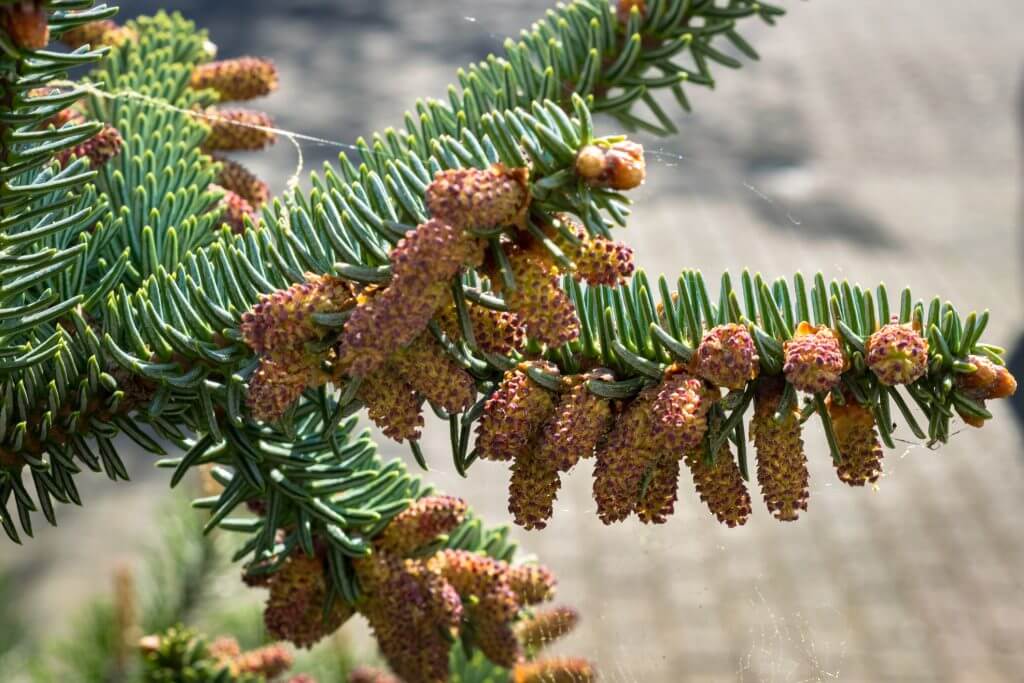

Juniperus or Juniper
Juniper is an evergreen conifer with scaly leaves, differing in size from low shrubs to tall trees. It can grow up to 40m tall and takes 6-18 months to grow. Its bluish or reddish-brown cones with waxy covering resemble berries.
This conifer is fragrant and easy to maintain as it doesn’t need pruning. It is also attractive to birds, hence, a favourite nesting site. It is versatile and can thrive in any environment.
- Location: Full sun or light shade
- Soil: Any well-drained soil
- Watering: Water during dry spells for the first 24 months. No need for watering after as junipers are drought-resistant.
- Pruning: No pruning required
- Feeding: Fertilise every spring.


Cupressaceae or Cypress
Cypress has a straight trunk tapering at the base. It can grow up to 24m tall and 9m wide. It has short needles that look like feathers. Most of the cypress varieties have needles that are brown in winter, while others have yellow or gold autumn colour.
Some cypress trees are deciduous that shed leaves in autumn while some are evergreen. Depending on the type of cypress, the leaves are of various colours ranging from dark green to silvery green. The arrangements of leaves are either spirally or whorled, also depending on the species or genus.
- Location: Full sun or partial shade
- Soil: Rich, acidic soil
- Watering: After planting, soak the soil around the tree. Give the cypress tree a lot of water in spring and in autumn. Water them if you don’t get rain for more than a month, but otherwise, they can withstand occasional drought once established.
- Pruning: Prune diseased, dead, or broken branches. But for trimming, wait until late spring or early summer.
- Feeding: Apply 8-10cm of organic mulch. Fertilise every autumn with a balanced fertiliser.


Cupressocyparis Leylandii or Leighton Green Cypress
A type of cypress, Leighton Green cypress deserves to be on the list as it is a favourite hedging conifer because it is fast-growing – growing up to 3m in its first 18 months. It grows faster than any cypress or conifer. It grows up 8m tall and 4m wide, making it an effective privacy screen and windbreak.
This conifer has a stunning dense, green foliage, bringing a lively colour to your garden. An evergreen, Leighton Green Cypress has a pyramidal form. Its thick leaves, about 1mm long, are slightly fragrant and dark green in colour but with a paler underside. The branches are moderately flattened and have dense, scaly needles.
- Location: Full sun
- Soil: Well-drained soil
- Watering: Water regularly after planting. Once established, water just enough to keep the soil wet.
- Pruning: Prune to keep its shape.
- Feeding: Use slow-release fertiliser every few months. Apply mulch around the base to keep it free from weeds.
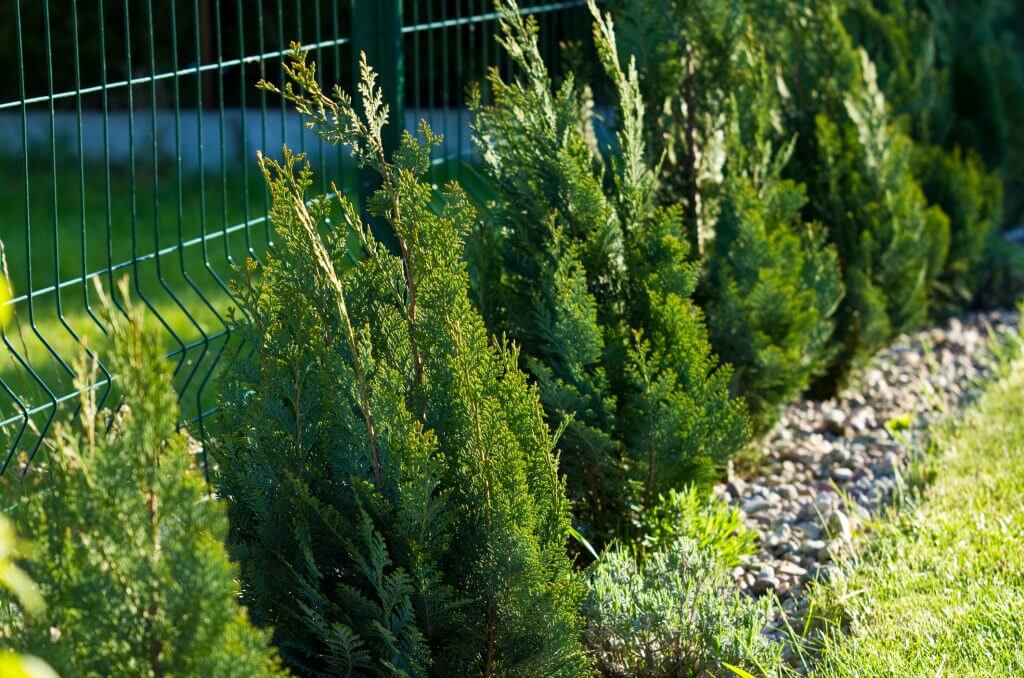

What to Expect
While conifers are low-maintenance, they can still be affected by some diseases. Though it is hard to diagnose if it’s because of diseases or environmental stress, here’s what you need to watch out for.
Needle Blight
Needle blight affects the twig tips and needles. Diseased needles are shed, creating a bald look. Blight causes foliage to turn brown, starting from the lower branches. You can use copper fungicide spray repeatedly to break the fungi’s life cycle.
Needle Cast
Needle cast is a fungal growth that causes conifers to lose needles. It appears on needles as yellow or light green spots, eventually turning brown or red. Small black fruiting bodies appear on the surface of the needles before the infected needles fall off. If not treated, the fungal growth can destroy and kill the entire needle.
Fortunately, you can still save your conifer. You can treat the infected needles with fungicides. At the first sign of fungal infection, remove the diseased needles.
Blister and Canker
A blister or gall looks like tumors on the bark’s surface and can produce waxy, yellowish discharge. The lower branches often show the first symptoms. On the other hand, canker is a blistered area in the branch, bark, or trunk of an infected conifer. Different species of fungi cause a canker. You can treat blister and canker by applying a fungicide and trimming the affected areas.
[elementor-template id=”4604″]
[elementor-template id=”6387″]
